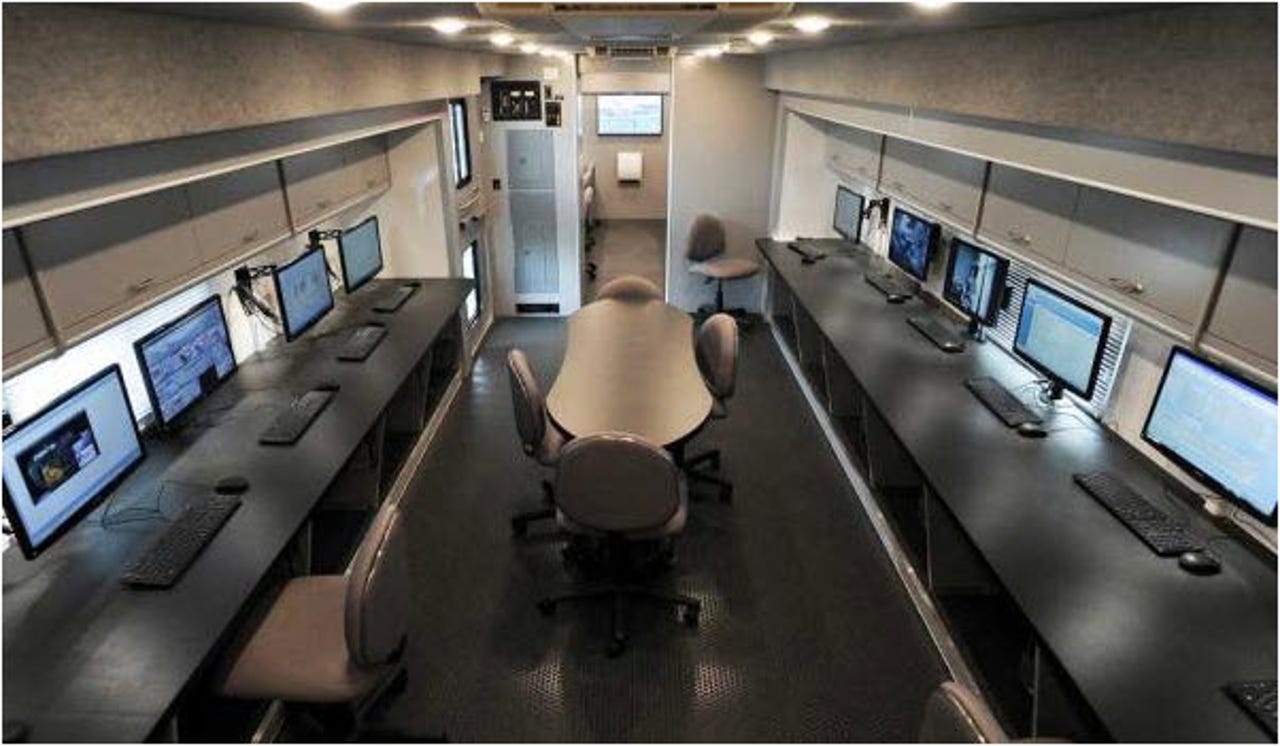Special purpose micro-datacenter deployed for emergencies

When we talk about preparing for business continuity in the datacenter, we often look for ways to replicate the entire set of business processes to a new location so that the customer experience remains unaffected. But when your customers range from commercial tankers to cruise ships, the problem set becomes a bit different.
Exactly what services were needed to keep their services up and running in the event of a disaster was the specific question that the Georgia Ports Authority answered when they unveiled their Mobile Command Center this week. Designed with input from IT and the port police the MCC contains the equipment and data necessary to continue port operations and provide security command and control in the event of an emergency. And with the hurricane season upon us, that capability could be tested at any time.
The 53-foot long unit, which can be highway transported by a standard over the road truck, is split between IT and security functions, providing 11 general access workstations for port operations and three dedicated terminals for the port police, for their IT and camera monitoring needs. According to Bill Sutton, the GPA’s director of information technology, the MCC makes available “all of the information, records and capability required foroperating the port remotely and securely.”

You’ll notice that they aren’t trying to replicate the entire IT operation of the GPA; just those capabilities that keep the port up and running. In the event of a disaster that has the potential to shut the port down or has closed the port and taken out the primary GPA location, this mobile unit has just what is necessary for the port to operate. The narrow focus of the mobile unit allows it to be very cost effective; it’s kept small and portable and still delivers on fulfilling the primary role of the GPA; keeping the port available and moving traffic and cargo through their areas of responsibility.